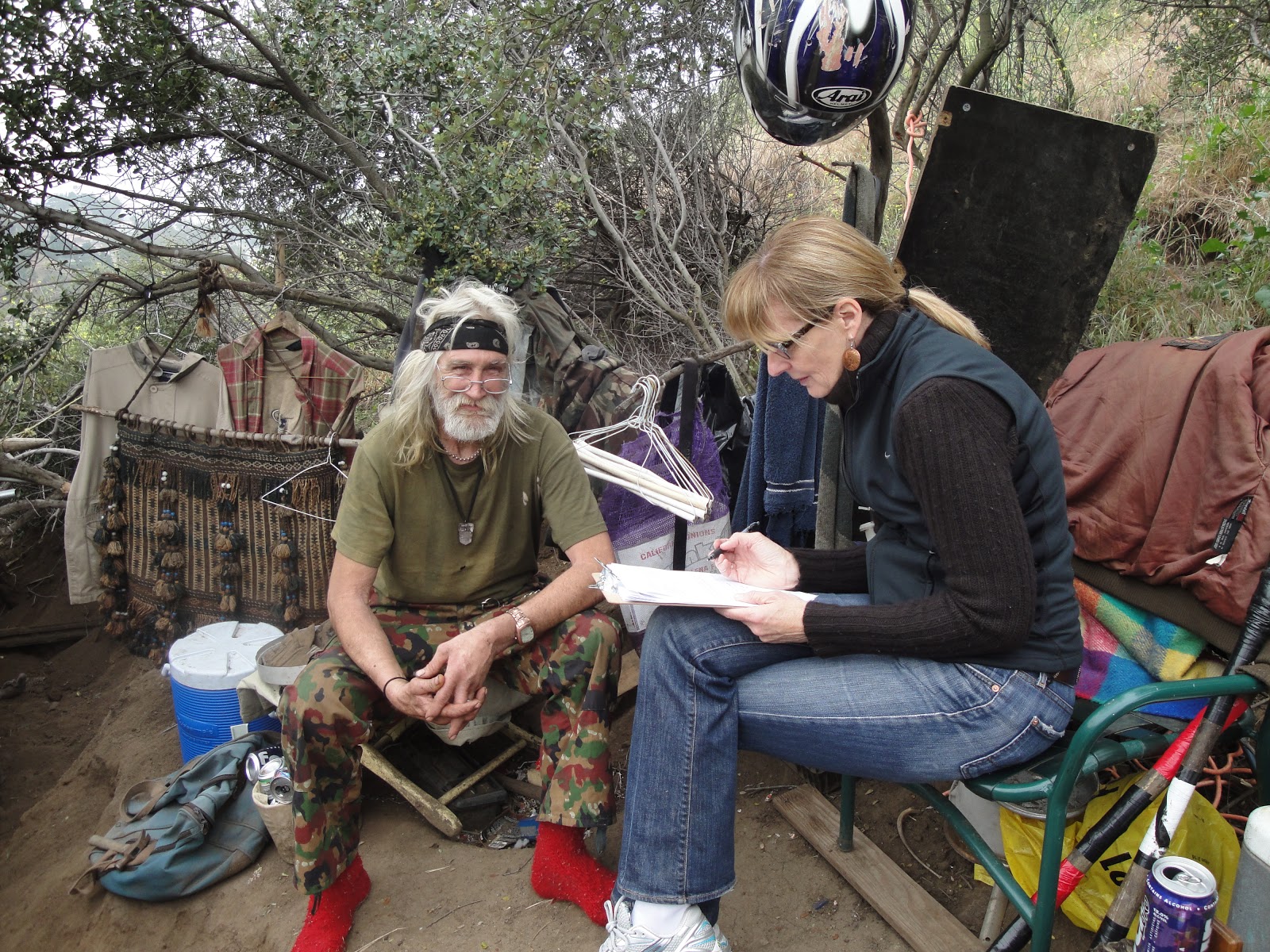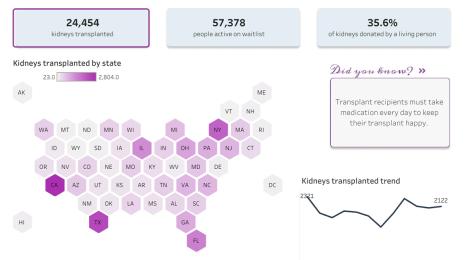Fighting poverty with data: Tableau Foundation looks back at 2019
Editor’s Note: As the year comes to a close, the Tableau Foundation team took the opportunity to reflect back on what we’ve learned about poverty, inequity, climate change, global health, and employee engagement. This series of blog posts shares the most critical insights we’ve gained from our partners and our programming over the past year, and we look forward to what’s to come in the next decade.
The broad and very simple definition of poverty reads something like this: living without adequate means, and without access to adequate resources to live a dignified life. But this understanding of poverty doesn’t bring us any closer to a solution. It doesn’t capture the reasons why a person might not have the financial assets they need to secure housing, for instance, or why without the aid of a food pantry, they might not be able to put meals on the table. And it doesn’t capture what a person needs to gain greater stability in their life.
At Tableau Foundation, we’ve learned from our grant partners that while solving poverty on a broad scale may be their goal, it’s not how they go about their work. Instead, they’re using data to see deep into the issue and understand the needs of the people they’re trying to serve. Even if that means completely upending the traditional method of addressing homelessness, or deeply interrogating and reconsidering the design of a program, organizations working to fight poverty are increasingly using data to design programs and services around individuals, not abstract statistics. This, unsurprisingly, makes their work more complex. But as we’ve seen this past year, it makes it infinitely more effective—and more human.
Here are some of the key insights that have come out of our grant partnerships to end poverty in the past year.

1. Poverty is complex and systemic—but that doesn’t mean it can’t be solved
In the U.S., where our partnerships in the poverty space have really intensified in the last year, a chasm has opened up in the economic spectrum. Right now, says Neal Myrick, global head of the Tableau Foundation, “we’re in a situation where the majority of the money is flowing all the way to the top. The fact that wealth is not fairly distributed is an underlying problem that affects pretty much everything.” But while organizations fighting poverty are conscious of the fact that the problems they’re working against are, in large part, due to failures of a system, they’re not taking that as an excuse not to act. “The work we’re doing now on solutions with our grant partners comes from the idea that we need to support people now, because we can’t just take the approach of waiting for the system to change,” Myrick says.
One of our newest partners in this space exemplifies this idea. Housing Connector is an organization in Tableau’s home community of Seattle and King County working to rapidly rehouse people experiencing homelessness. There are over 12,000 people living without shelter in the region, and Housing Connector believes this number can come down if more existing housing units are made available to people who need them. Housing Connector works directly with landlords and property managers to mitigate the financial risk of lowering the screening criteria for prospective tenants, which is often prohibitive for people with low-incomes, sub-prime credit scores, criminal history, or a history of eviction. The platform is built in partnership with Zillow, a property listing site with a national reach, so it has the potential to scale beyond King County. While Shkëlqim Kelmendi, Housing Connector’s founder, says that this is not a solution for the homelessness crisis at scale, it can help more people transition into stability by using data to identify people in need of housing and swiftly matching them with accessible units.
This type of change might not be on the level of disrupting the entire economic system to prevent people from falling into homelessness in the first place, adds Jason Schumacher, head of U.S. grantmaking for Tableau Foundation, but it begins to break down the idea that we can’t do anything to combat poverty in the U.S. “There might always be some disparity in income in the U.S.,” he adds, “but that doesn’t mean that we need to have such inequality that some people end up being homeless and cannot be served. Homelessness is not something to manage, it’s something that we can solve.”

2. Data keeps organizations responsive in a changing landscape
Through the Tableau Foundation’s partners, we’ve seen data play a key role in enabling them to make an impact even on complex and systemic issues like homelessness and poverty. “There’s a lot of action that can be taken now, and data can really help improve what those actions are and make them as effective and efficient as possible,” Myrick says.
That’s something we’ve learned firsthand from Catalyst Kitchens, which supports non-profits that are creating pipelines to jobs in the food industry for people who face barriers to employment, like homelessness or involvement with the criminal justice system. While Catalyst Kitchens aims to help as many people find employment through their partners as possible, the organization recognizes that a job is not a sure ticket to stability. This year, Catalyst Kitchens has worked with its partner non-profits to support more intensive job training programs that set people up for higher-paying jobs in the food industry—those that meet or even exceed what’s considered a “living wage” in the local community.

Encouraging this shift is certainly not the easy route, says James Hondros, Catalyst Kitchen’s impact analyst, but Catalyst Kitchens wants to ensure that that they’re measuring success by the outcomes of the people they serve, not just the numbers they collect in a dashboard. Doing so means they need to be constantly analyzing the wider economic trends around their work—and be ready to evolve their programming to meet shifting demands. A cohort of “data champions” from Catalyst Kitchens’ partner organizations are working to use Tableau to build out data streams and dashboards to track the long-term outcomes of people who go through their programming. This enables them to remain accountable to people and their success long after they exist their programs and to see where they might need to make adjustments to their programs going forward.
As partners in this type of work, Tableau Foundation has always believed that the funding and support we offer organizations like Catalyst Kitchens should be flexible enough to encourage this type of innovation and responsiveness. Especially as economic conditions continue to shift, we’ve been reminded this year of the importance, above all, of keeping individuals and their needs at the center of all the work we’re supporting to alleviate poverty.
3. An individualized approach to data brings fresh perspectives
All of our partners take an individualized approach to poverty. For one of our partners, Community Solutions, a national non-profit focused on helping cities end homelessness, it’s led to a completely new approach to addressing homelessness that’s helping communities more quickly and securely house people who lack stable shelter. In the past several years, Tableau Foundation has worked with Community Solutions to help cities build out lists of every person experiencing homelessness in their communities. These by-name lists, which are updated in real time, contain not only the names of unsheltered people, but also their history, their current circumstances, what services they regularly access, and what they need—whether it be other services or specific items. This data allows program teams to act quickly and empathetically whenever they notice a change in a person’s circumstances, and to work as effectively as possible to get people into housing that meets their needs. It’s a more complicated dataset than the traditional way of assessing homelessness, but it’s creating much more visibility into an issue that for years has seemed unsolvable.
“That data is informing what interventions are needed by the system,” says Jessica Venegas, a principal at Community Solutions. “As communities collect more data, they understand who is coming into the system and who is leaving—and they can start to work upstream of homelessness and craft interventions so we can end homelessness permanently.”
What we’ve seen through the success of Community Solutions—to date, 13 communities have ended chronic or veteran homelessness—is that while they’re centering the individual, the data they’re collecting around the people they work with has made the entire landscape of homelessness in a community clearer. If a city is learning, through their by-name list, that the majority of people are falling into homelessness because of high rents and low wages, Community Solutions’ can direct them to the levers to pull to alleviate those stressors. Or if many people are struggling with drugs, Community Solutions’ partner organization on the ground can recommend that a city strengthen its health and rehabilitation centers.
To solidify its commitment to using data to end homelessness, Tableau Foundation pledged this past year to support their goal of assisting 50 U.S. communities reach “functional zero” in the number of people experiencing chronic and veteran homelessness.
"With these 50 cities, we’ll have enough proof points across different types of cities that are large and small, red and blue, urban and rural, and so on, to show that no city has an excuse for not being able to solve homelessness, and then that will change the national conversation,” Myrick says.

4. Challenges are interconnected—and so is the data
Although many of our partners are focusing on one specific issue within poverty or other areas, they have taught us that oftentimes, these issues are interconnected and should be treated as such. For example, Feeding America, one of our partner organizations that manages a network of food banks that collectively serve over 40 million Americans, released research this year, built in Tableau. It shows how hunger and food insecurity is often associated with poor health and higher costs. While Feeding America is focused on tackling hunger in America, their research often touches many other facets of poverty, like poor health or housing instability. If a person falls into poor health because of lack of access to good nutrition, their risk of homelessness or loss of a job can increase.
“It’s important to talk about how intersectional and overlapping these areas are,” Myrick says. Even as our partner organizations are focused on improving the lives of the individual people they serve, they’re pointing the way to a fairer economy that precludes the issues they’re working on—from homelessness to unemployment to hunger—from existing in the first place.
To learn more about our partnerships for poverty, visit: https://www.tableau.com/foundation/issue-area/poverty








